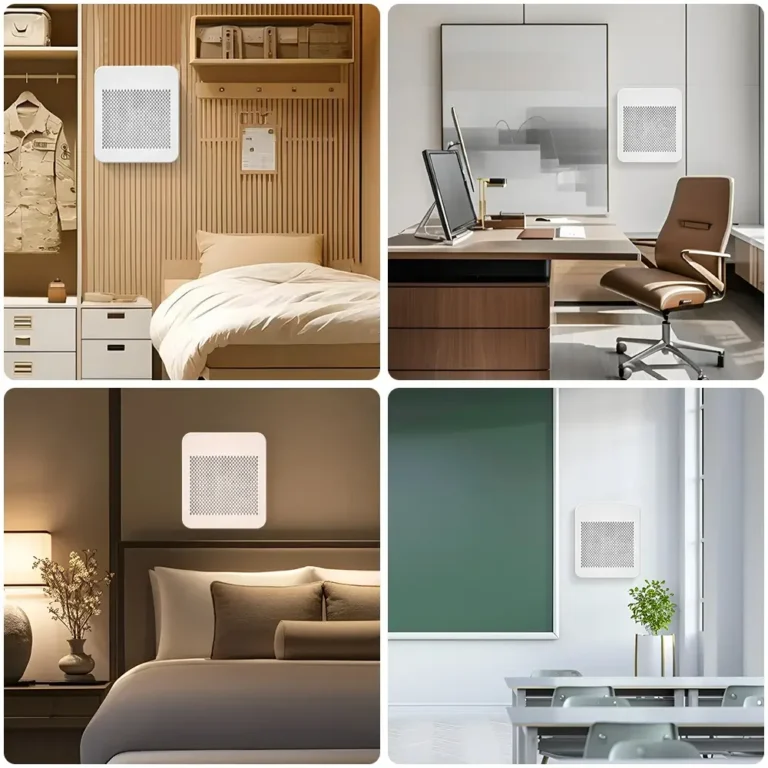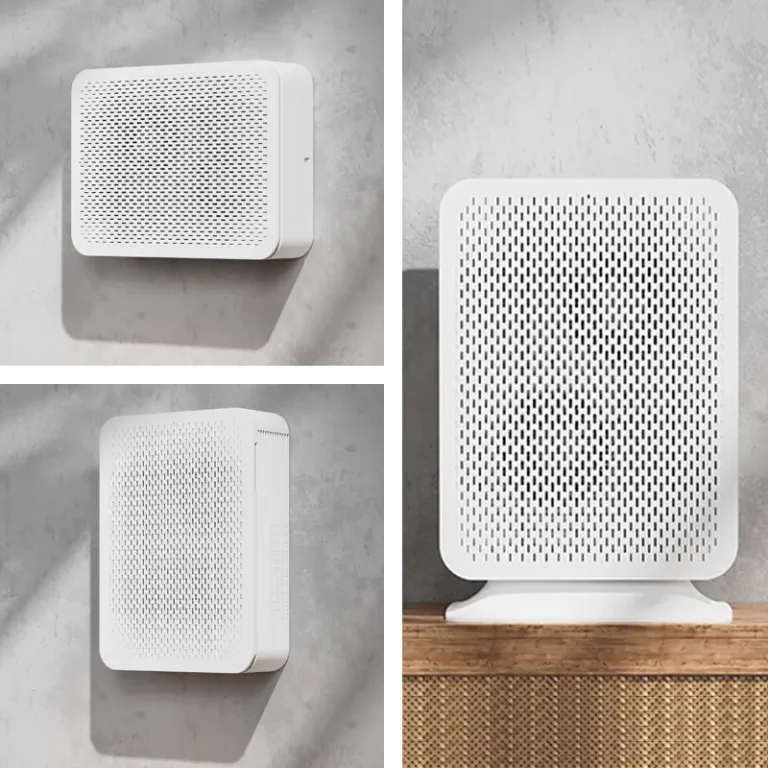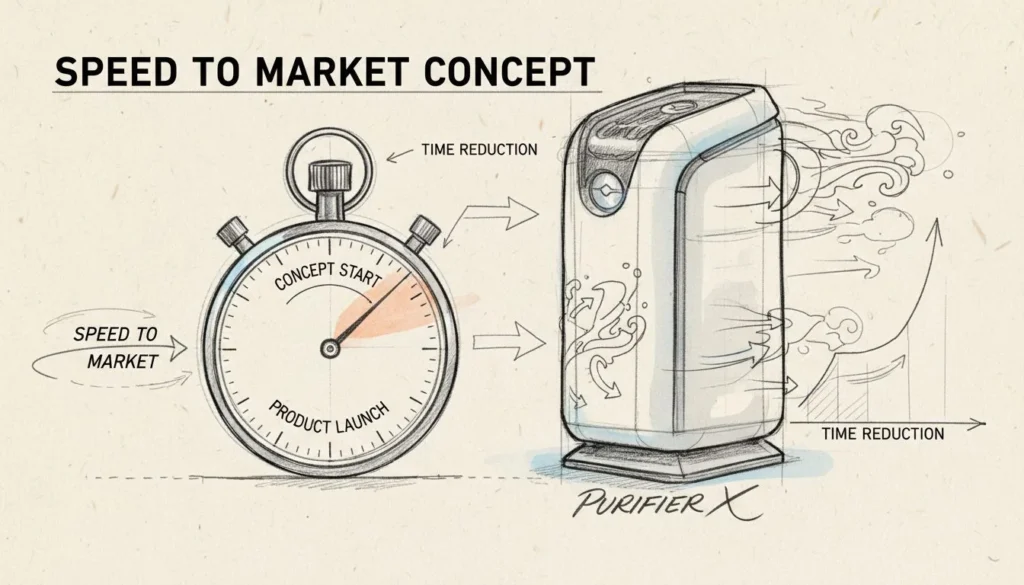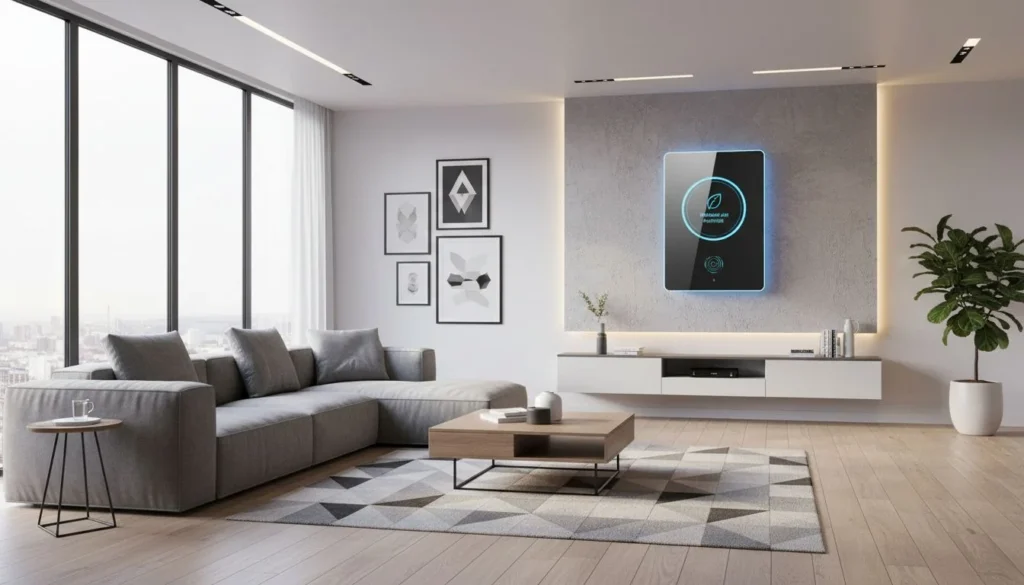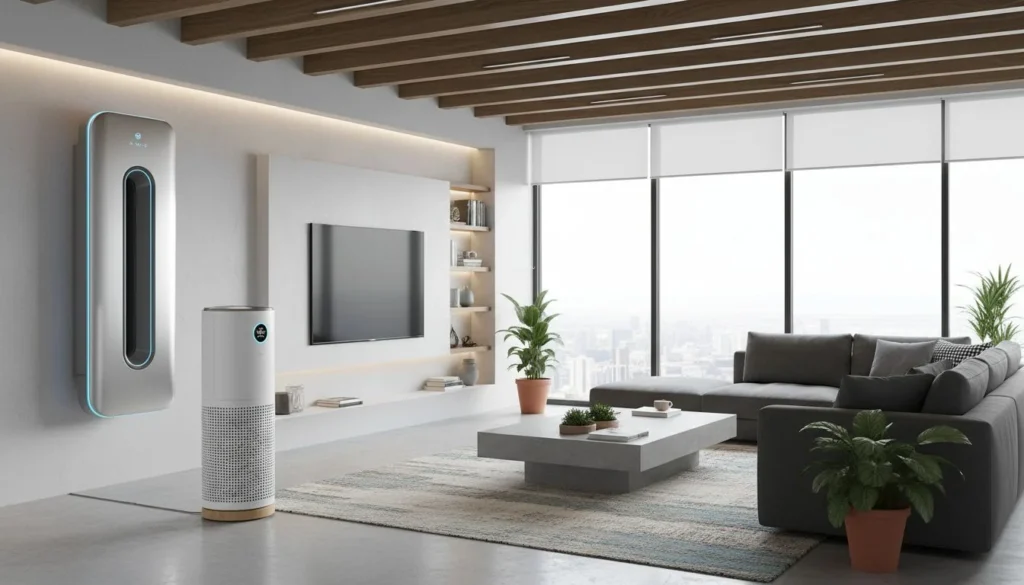HVAC 가전제품과 공기청정기에 설치된 공기 필터의 품질과 구조가 동일한 것은 아닙니다. 이러한 필터를 분석하는 한 가지 방법은 MERV 등급을 사용하는 것입니다. 이 시스템에 대해 자세히 알아보세요.
공기가 이동하면서 공기청정기 및 기타 HVAC 시스템을 통과하는 동안 결국에는 여러 필터를 통과하게 됩니다. 공기청정기의 경우 필터는 알레르기 유발 물질, 먼지, 병원균 등 공기 중에 존재하는 다양한 오염 물질을 걸러냅니다.
하지만 모든 공기청정기가 같은 것은 아닙니다. 대부분의 경우 필터의 품질이 다릅니다. 따라서 가정에 가장 적합한 MERV 등급이 무엇이며 공기 필터의 성능을 평가하는 데 어떻게 도움이 되는지 알아볼 필요가 있습니다.
MERV 필터 등급이란?
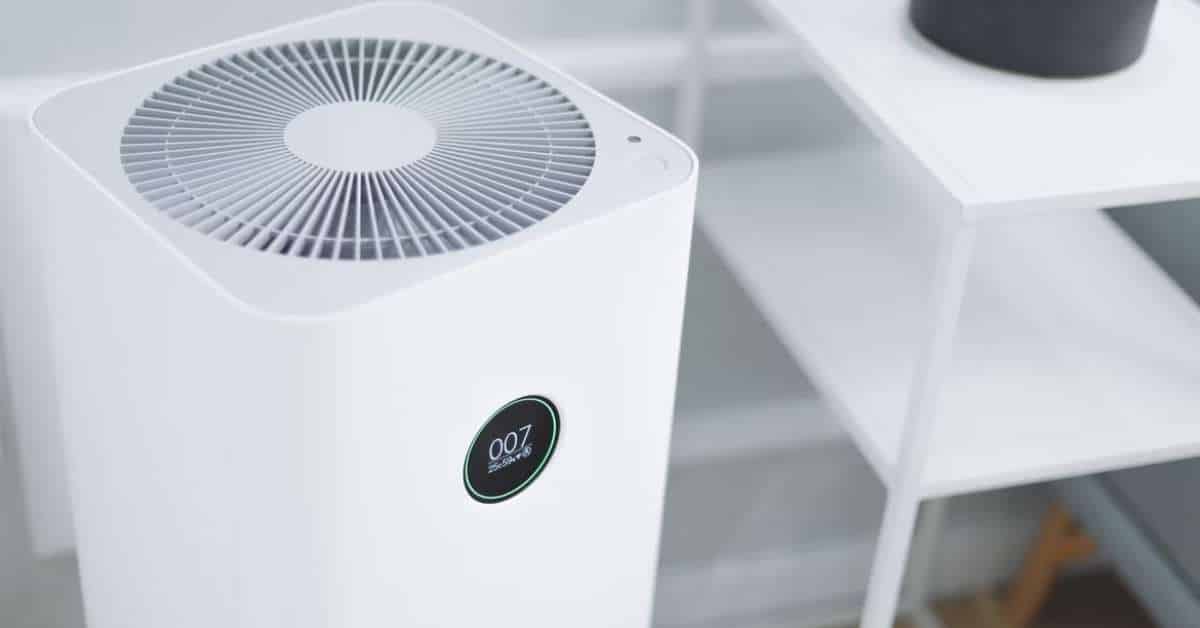
이미지 출처: Unsplash
공기청정기를 처음 사용하신다면 MERV 등급이 무엇인지 모를 가능성이 높습니다. 구체적으로 MERV 등급은 다음을 의미합니다. 최소 효율 보고 값. 공기청정기 전체가 아닌 필터에 할당된 명칭입니다.
간단히 말해, 가정용 필터의 MERV 등급은 필터를 통과하는 다양한 공기 중 오염 물질을 포집하는 특정 필터의 효율성을 알려줍니다. 또한 메르브 등급이 높은 필터는 작은 입자를 포집하는 데 탁월한 것으로 알려져 있습니다.
따라서 HEPA 필터는 공기 중의 미세한 입자와 물질을 포집하도록 설계되었기 때문에 MERV 필터 등급이 가장 높은 것이 정상입니다.
FPR, MERV & MPR: 차이점은 무엇인가요?
그리고 미국 난방, 냉동 및 공조 기술자 협회 (ASHRAE)가 MERV 시스템을 고안했습니다. ASHRAE의 설명에 따르면, MERV의 목표는 소비자가 이러한 필터의 성능을 이해하고 가정에 이상적인 MERV 등급을 찾을 수 있도록 돕는 것입니다.
그러나 공기청정기를 평가하는 유일한 측정 시스템은 아닙니다. MPR과 FPR도 여전히 존재합니다.
에어 필터 FPR의 의미와 성능
필터 성능 등급(FPR)은 공기청정기가 공기에서 입자를 얼마나 잘 제거할 수 있는지를 나타내는 척도입니다. FPR이 높을수록 공기청정기의 입자 제거 능력이 우수하며, 4~10의 범위로 표시됩니다. FPR은 청정기가 제거할 수 있는 입자의 크기를 기준으로 하며, 가장 작은 입자가 가장 제거하기 어렵습니다. 이 측정은 홈 디포에서 수행합니다.
FPR과 MERV의 차이점
| 필터에 대한 FPR 등급 | MERV 등급 등가 | 오염 물질 유형 |
| 4 | MERV 8 - 10 | 먼지, 보푸라기, 집먼지 진드기 및 곰팡이 |
| 5 | ||
| 6 | MERV 11 - 12 | 먼지, 보푸라기, 집먼지 진드기, 곰팡이, 애완동물 비듬, 연기 및 스모그 |
| 7 | ||
| 8 | MERV 13 - 16 | 먼지, 보푸라기, 집먼지 진드기, 곰팡이, 애완동물 비듬, 연기 및 스모그, 박테리아 및 바이러스 |
| 9 | ||
| 10 |
최고의 FPR 에어 필터 브랜드
FPR 등급으로 테스트된 공기 필터 브랜드는 많지 않습니다. 하지만 홈디포에서 판매되는 공기청정기에는 FPR 테스트를 거친 공기 필터가 있습니다. 이러한 공기 필터 브랜드 중 하나는 하니웰.
MPR
MPR(미세 입자 성능 등급)은 공기 필터가 1마이크론보다 작은 입자를 공기에서 제거하는 능력을 평가하는 방법입니다. 3M에서 만든 등급입니다. MPR이 높을수록 필터가 입자를 더 잘 제거할 수 있습니다. MPR 시스템은 0.3마이크론에서 1마이크론 입자를 제거하는 필터의 능력만 평가합니다.
FPR과 MERV의 차이점
| 필터의 MPR 등급 | MERV 등급 등가 | 오염 물질 유형 |
| 300 | MERV 6 - 7 | 먼지 및 보푸라기 |
| 600 | MERV 8 - 10 | 먼지, 보푸라기, 집먼지 진드기 및 곰팡이 |
| 800 | ||
| 1000 | MERV 11 - 12 | 먼지, 보푸라기, 집먼지 진드기, 곰팡이, 애완동물 비듬, 연기 및 스모그 |
| 1200 | ||
| 1500 | MERV 13 - 16 | 먼지, 보푸라기, 집먼지 진드기, 곰팡이, 애완동물 비듬, 연기 및 스모그, 박테리아 및 바이러스 |
| 1900 |
최고의 FPR 에어 필터 브랜드
공기 필터의 FPR 등급은 MERV와 마찬가지로 중요합니다. 이는 공기 필터가 공기 중 입자를 얼마나 잘 제거하는지를 알려줍니다. 따라서 일부 공기청정기 브랜드에는 이 기준에 따라 인증된 필터가 있습니다. 그중에는 공기청정기 브랜드인 Filtrete가 있습니다.
MERV
앞서 언급했듯이 MERV는 최소 효율 보고 값의 약자입니다. 구체적으로 0.3마이크론에서 10마이크론 크기의 입자 및 물질을 포집하는 필터의 능력을 측정합니다.
그것은 미국 난방, 냉동 및 공조 기술자 협회 (ASHRAE)에서 이 측정법을 고안했습니다. ASHRAE의 설명에 따르면, MERV의 목표는 소비자가 이러한 필터의 성능을 이해하고 가정에 가장 적합한 MERV 등급을 찾도록 돕는 것입니다.
필터에 대한 MERV 등급: 왜 중요한가요?

이미지 출처: Unsplash
MERV 등급에 대해 이야기해야 하는 이유는 무엇인가요? 그 이유는 다음과 같습니다:
COVID-19
MERV가 높은 필터는 치명적일 수 있는 이 질병을 일으키는 바이러스를 포집하는 데 효과적입니다. 공기 청정기에는 다음과 같은 가능성을 줄이기 위해 의료용 등급의 필터를 사용해야 합니다. 실내에서의 코로나19 전파.
ASHRAE에 따르면 MERV 등급이 13인 필터가 코로나19에 적합하다고 합니다. 그러나 실내 공기를 COVID-19로부터 안전하게 지키려면 MERV 14 이상의 필터를 사용하는 것이 좋습니다.
산불
산불이 발생하기 쉬운 지역에 거주하는 경우, MERV 등급에서 높은 점수를 받은 공기 청정 시스템을 우선적으로 고려해야 합니다. 산불은 화염에 직접 노출되지 않더라도 매우 위험합니다. 산불로 인해 발생하는 연기에는 건강에 영향을 미칠 수 있는 독성 입자가 포함되어 있습니다.
에너지 효율성
MERV 등급에서 높은 점수를 받은 공기 필터는 공기 중 오염물질의 크기에 관계없이 다양한 공기 중 오염물질을 줄일 수 있습니다. 공기청정기에 이러한 필터가 장착되어 있다면 외부 환기가 더 이상 필요하지 않을 수 있습니다.
더 이상 문과 창문을 열 필요가 없어지면 에너지 소비를 줄일 수 있습니다. 결국, 더 이상 냉난방 및 기타 공조 시스템에 과도하게 의존할 필요가 없습니다. 물론 에너지 절약은 강력한 공기청정기를 사용하면 얻을 수 있는 혜택 중 하나입니다.
MERV 등급 차트
숫자가 크다고 해서 실내 공기 문제에 대한 최선의 해결책은 아니라는 점을 항상 기억하세요. 예를 들어, 권장 등급보다 높은 MERV 등급의 공기 필터를 사용하면 오히려 공기청정기의 성능이 저하될 수 있습니다.
이 시점에서 이미 실제 MERV 등급 차트를 확인하는 것이 필수적입니다. 후자는 공기 필터와 적절한 사용법을 이해하는 데 참고 자료로 사용할 수 있습니다.
| 표준 5.2 최소 효율 보고 값 | 더스트 스팟 효율성 | 평균 체포율 | 일반적으로 통제되는 오염 물질 | 일반적인 용도 및 애플리케이션 | 필터 유형 | 특정 등급 및 용도 |
| 20
19 18 17 |
N/A
N/A N/A N/A |
N/A
N/A N/A N/A |
<0.30미크론 미만 입자
연결되지 않은 바이러스 탄소 먼지 모든 유형의 연소 연기 |
방사성 물질
제약 발암성 물질 클린룸 |
.10 - .20 미크론 입자에 대해 99.999% 이상의 효율을 제공하는 HEPA 필터
HEPA 필터 ≥0.30미크론 입자에서 99.97% 이상의 효율 |
가정용 최고 MERV 등급: MERV 8 - 13
주거용 최고 MERV 등급: MERV 8 - 10
산불 연기에 대한 최고의 MERV 등급: MERV 13 - 20
알레르기에 대한 최고의 MERV 등급: MERV 16 - 20
공기 흐름에 가장 적합한 MERV 등급: MERV 13 - 20
반려동물 비듬에 대한 최고의 MERV 등급: MERV 11 - 16
목재 먼지에 대한 최고의 MERV 등급: MERV 11 -16
곰팡이 포자에 대한 최고의 MERV 등급: MERV 17 - 20
가정용 용광로에 대한 최고의 MERV 등급: MERV 6 - 8
AC 필터에 가장 적합한 MERV 등급입니다: 호환성에 따라 다름
건식 벽체 먼지에 대한 최고의 MERV 등급: MERV 12 - 16
꽃가루에 대한 최고의 MERV 등급: MERV 16 - 20 |
| 16
15 14 13 |
N/A
>95% 90-95% 89-90% |
N/A
N/A >98% >98% |
.30-1.0 미크론 입자
박테리아 담배 연기 물방울 핵 |
상업용 건물
수술실 병원 입원실 흡연 구역 및 라운지 |
백 필터
박스 필터 |
|
| 12
11 10 9 |
70-75%
60-65% 50-55% 40-45% |
>95%
>95% >95% >90% |
1.0~3.0 미크론 입자
납 먼지, 가습기 먼지 자동차 배기가스, 매연, 밀가루 산불 연기 |
주거용 건물
상업용 건물 병원 실험실 |
백 필터
박스 필터 |
|
| 8
7 6 5 |
30-35%
25-30% <20% <20% |
>90%
>90% 85-90% 85-90% |
3.0-10.0 미크론 입자
곰팡이 포자, 헤어 스프레이 패브릭 프로텍터, 시멘트 먼지 푸딩 믹스 |
상업용 건물
주거용 건물 산업 공간 |
플리츠 필터
카트리지 필터 버려지는 필터 |
|
| 4
3 2 1 |
<20%
<20% <20% <20% |
75-80%
70-75% 65-70% <65% |
>10.0미크론 이상의 입자
꽃가루 집먼지 진드기 스프레이 페인트 먼지, 샌딩 먼지 카펫 및 섬유의 섬유질 |
최소한의 공기 여과가 필요한 영역
주거용 창문형 에어컨 |
카트리지
버리기 정전기 |
MERV 등급 척도
MERV 등급을 이해하는 것이 중요합니다. 이를 통해 기존 요구와 필요에 적합한 공기 필터를 알 수 있습니다. 공기 정화는 다양한 실내 환경에서 필수적인 요소이므로 필터링 기술을 이해하는 것이 중요합니다.
다행히도 등급을 이해하는 것은 어렵지 않습니다. 결국, 소비자가 다양한 공기 필터를 분석하고 비교할 수 있도록 설계되었습니다.
다음은 MERV 등급 척도를 이해하기 위한 구체적인 가이드라인입니다.
1-4 MERV 등급
- 이 카테고리에서 필터는 일반적으로 프리필터, 창문형 에어컨, 주거용 난로 등에 사용됩니다.
- 큰 꽃가루, 카펫 및 섬유 섬유, 톱밥, 집먼지 진드기 등을 제거할 수 있습니다.
- 필터의 실제 기능은 10마이크론 정도의 작은 입자와 오염 물질을 걸러내는 것입니다.
- 참고로 이 등급은 알레르기 및 천식 환자에게는 최선의 선택이 아닙니다. 이 필터는 일반적인 알레르기 유발 물질을 걸러내지 못합니다.
5-8 MERV 등급
- 이 규모 내에서 필터는 산업 건물, 주거 및 상업용 구조물, 페인트 부스 등에 사용되고 있습니다.
- HVAC 시스템과 공기청정기에 이 공기 필터가 있으면 톱밥, 카펫 섬유, 꽃가루, 집먼지 진드기, 건물 먼지, 보푸라기, 곰팡이 포자 등을 완화할 수 있습니다.
- 다양한 레퍼런스에 따르면 MERV 5-8 필터는 3~10마이크론의 작은 물질과 입자상 물질을 포집할 수 있습니다.
- 이러한 필터를 사용하려면 약간의 비용이 필요할 수 있습니다.
9-12 MERV 등급
- 필터의 등급이 9-12 MERV 범위 내에 있으면 기존 공기 여과 이상의 기능이 필요한 주거용 및 상업용 건물에 적합하다는 의미입니다. 병원과 실험실이 여기에 해당합니다. 산불 시즌에는 가정에서도 이러한 필터가 필요할 수 있습니다.
- 이 등급의 공기 필터는 섬유, 집먼지, 레지오넬라, 납 먼지, 가습기 먼지, 집먼지 진드기, 톱밥, 꽃가루 등의 존재를 완화할 수 있습니다.
- 1~3미크론 입자를 필터링할 수 있습니다.
- 이러한 필터는 MERV 등급이 낮은 필터보다 약간 더 비싸다는 점에 유의하세요.
13-16 MERV 등급
- 주거용 및 상업용 건물을 위한 우수한 여과 기능을 찾고 있다면 이 범주에 속하는 필터를 구입하는 것이 필수적입니다. 이 MERV 등급의 필터는 일반적으로 입원 환자 치료 시설, 수술실 및 병원에서 사용됩니다. 기술적으로는 미세한 오염 물질을 포집하는 데 적합합니다.
- 기본적으로 이러한 필터는 MERV 1-12 내의 필터가 제거할 수 있는 모든 오염 물질을 포집할 수 있습니다.
- 그러나 동시에 병원균, 자동차 배기가스, 재채기 입자, 담배 및 담배 연기, 매연, 화장품 잔여물, 애완동물 비듬을 제거하는 데도 적합합니다.
- 대부분의 HEPA 필터가 이 범주에 속합니다. 공기 중 0.3~1마이크론의 입자 및 물질을 포집할 수 있습니다.
17-20 MERV 등급
- 이 필터는 의약품, 발암성 및 방사성 잔류물, 수술실 등이 있는 시설에서 사용됩니다.
- MERV 1-16 필터가 제거할 수 있는 모든 입자, 물질 및 오염 물질을 포집할 수 있습니다. 동시에 바이러스, 라돈, 미세한 알레르겐, 탄소 먼지 및 연소 잔여물도 제거할 수 있습니다.
- 이 필터는 0.3마이크론보다 작은 입자를 제거할 수 있습니다.
MERV 효율성 차트
| 공기 필터 | MERV 7 필터 | MERV 8 필터 | MERV 11 필터 | MERV 13 필터 | MERV 15 필터 | MERV 16 필터 | MERV 17 HEPA 필터 | MERV 18 HEPA 필터 | MERV 19 HEPA 필터 | MERV 20 HEPA 필터 |
| 0.3-1.0 미크론 | 20% 미만 | 20% 미만 | 20% 미만 | 75% 미만 | 85% - 94% | 95% 이상 | 99.97% | 99.997% | 99.9997% | 99.99997% |
| 1.0~3.0 미크론 | 20% 미만 | 20% 미만 | 65% - 79% | 90% 이상 | 95% 이상 | 95% 이상 | 99.99% | 99.99% | 99.99% | 99.99% |
| 3.0-10 미크론 | 50% - 69% | 70% - 85% | 85% 이상 | 90% 이상 | 90% 이상 | 90% 이상 | 99.99% | 99.99% | 99.99% | 99.99% |
위의 표는 다양한 크기의 입자를 제거할 때 다양한 MERV 필터 등급의 효율성을 보여줍니다. 보시다시피 MERV 등급 16~20이 가장 높은 여과 성능을 제공합니다. 기본적으로 HEPA 필터이므로 0.1마이크론만큼 작은 공기 중 오염 물질을 99.9% 포집할 수 있습니다. 알레르겐과 병원균에 대한 지속적인 위협에 직면한 가정과 공간에 적합합니다.
최고의 MERV 등급

이미지 출처: Unsplash
다음 섹션에서는 특정 애플리케이션 및 요구 사항에 이상적인 MERV 등급에 대해 설명합니다.
가정용 최고 MERV 등급
가정용의 경우, 이는 MERV 등급이 8~13인 필터를 사용해야 함을 의미합니다. 특히 이러한 필터는 이미 주거용 및 상업용 애플리케이션용으로 설계된 고급 필터입니다.
산불 연기에 대한 최고의 MERV 등급
그렇다면 산불 연기에 대한 이상적인 MERV 등급은 어느 정도일까요? 연구에 따르면 9 - 12의 MERV 등급은 이미 산불 연기의 위협을 흡수하는 기준선입니다. 하지만 완벽한 성능을 원하신다면 13~20 MERV 등급의 공기 필터를 사용하는 것이 좋습니다.
알레르기에 대한 최고의 MERV 등급
알레르기 환자에게 이상적인 필터는 최대 0.3마이크론 이하의 오염 물질을 제거할 수 있어야 합니다. 문제는 대부분의 일반적인 알레르기 유발 물질이 이 범위 내에 있다는 것입니다. 여기에서 MERV 17-20 등급의 공기 필터를 추천합니다. MERV 13~16 필터도 괜찮지만 실내 공간에서 더 높은 수준의 보호를 원할 수도 있습니다.
공기 흐름에 가장 적합한 MERV 등급
공기 중 오염 물질의 위협 없이 공간의 공기 흐름을 최적화하려면 MERV 13~20 등급의 공기 필터를 사용해야 합니다. 이 범위 내에서 공기 필터는 공기 중의 다양한 오염 물질을 포집할 수 있습니다.
반려동물 비듬에 대한 최고의 MERV 등급
반려동물의 털을 제거하는 경우, 공기청정기에 MERV 11~16 등급의 필터가 있는 것이 가장 좋습니다. 물론 공기 중에 떠다니는 반려동물의 잔여물을 흡입하지 않으려면 HEPA 필터를 자유롭게 선택할 수 있습니다.
목재 먼지에 대한 최고의 MERV 등급
목재 먼지는 큰 파편이나 미세 먼지의 형태로 나타날 수 있습니다. 전자의 경우 MERV 등급이 5 - 8이면 충분합니다. 하지만 미세먼지의 경우 MERV 11~16 등급 이내의 공기 필터가 필요합니다.
곰팡이 포자에 대한 최고의 MERV 등급
곰팡이 포자는 미세한 알레르겐입니다. 따라서 HEPA 필터만이 이에 대해 효과적입니다. 여기서 17~20 범위의 공기 필터가 곰팡이 포자를 포집하는 데 가장 효과적입니다.
가정용 용광로에 대한 최고의 MERV 등급
가정용 난로의 경우, MERV 등급이 6~8인 공기 필터는 이미 허용됩니다. 하지만 미세먼지가 걱정된다면 HEPA 필터가 있는 공기청정기를 사용하는 것이 좋습니다.
AC 필터를 위한 최고의 MERV 등급
어떤 유형의 에어 필터를 설치할지 결정하기 전에 AC 시스템의 호환성을 확인해야 합니다. MERV 등급이 높을수록 필터가 더 두껍습니다. 필터가 두꺼우면 기기에 맞지 않을 수 있습니다.
꽃가루에 대한 최고의 MERV 등급
곰팡이 포자와 마찬가지로 꽃가루는 거의 미세한 크기입니다. 따라서 MERV 등급이 17~20인 공기 필터를 사용하는 것이 좋습니다. 기본적으로 이러한 필터는 HEPA 필터입니다.
건식 벽체 먼지에 대한 최고의 MERV 등급
건식 벽체 먼지를 처리할 수 있도록 MERV 등급이 13~16인 공기 필터를 구입할 수 있습니다. 이 정도면 이러한 유해한 잔여물이 호흡기로부터 멀리 떨어지기에 충분합니다.
주거 공간을 위한 최고의 MERV 등급
이는 취급하는 오염 물질의 유형에 따라 다릅니다. 일반적으로 8~13의 MERV 등급이면 충분합니다. 하지만 알레르겐과 병원균으로부터 자유롭고 싶다면 다음을 충족해야 합니다. 가정용 공기 필터 MERV 등급은 17 - 20입니다.
HEPA 필터 MERV 등급
기본적으로 HEPA 필터는 MERV 등급 중 더 높은 등급에 속합니다. 구체적으로는 MERV 17 - 20 등급에 속합니다. 0.3마이크론 크기의 미세한 오염 물질을 99.9% 이상 포집할 수 있는 필터입니다. 병원균이나 알레르겐과 같은 오염 물질을 포집하는 데 효율적입니다.
최고의 HEPA 공기청정기 MERV 등급
브랜드에 관계없이 MERV 등급이 17~20인 모든 공기 필터는 이미 HEPA 필터로 인정됩니다. MERV 등급이 20인 공기 필터를 구할 수 있다면 좋은 것입니다. 이는 공기청정기가 공기 중 유해한 호흡기 위협 요소를 제거할 수 있다는 뜻입니다.
다이슨 공기청정기 MERV 등급
다이슨은 진공청소기와 같은 가정용 청소기로 유명한 브랜드입니다. 동시에 HEPA 공기청정기의 명성 높은 제조업체이기도 합니다. 공기 필터의 등급은 17~20 등급 이내이므로 다이슨 공기청정기는 다양한 공기 중 오염 물질을 제거하는 데 효과적이라고 믿을 수 있습니다.
하니웰 HPA300 MERV 등급
하니웰 HPA300은 뛰어난 공기청정기입니다. 알레르기 유발 물질, 병원균, 미세먼지 등 미세한 공기 중 입자를 포집할 수 있는 인증된 하니웰 HEPA 필터가 장착되어 있습니다.
세균 가디언 MERV 등급
세균가디언은 주거 공간용 고품질 공기청정기를 제조합니다. 이 공기청정기의 HEPA 필터는 MERV 17 등급 이상입니다. 이는 다른 공기 필터 브랜드와 동등한 성능을 가지고 있음을 증명합니다.
HEPA 등급을 받은 최고 등급의 공기청정기
다음은 제품에 고품질 HEPA 필터를 사용하는 다른 공기청정기 브랜드입니다.
무카 공기청정기
무카는 가정용 공기청정기 제작을 전문으로 합니다. 특히 많은 공기청정기가 중대형 공간에 적합합니다. 예상대로 이 공기청정기는 뛰어난 HEPA 필터를 갖추고 있으며, 각 필터는 최소 MERV 17 등급을 받았습니다.
콜저 공기 청정기
Colzer는 다양한 HEPA 공기청정기를 제공합니다. 실내 공기 정화 요구 사항에 관계없이 Colzer 공기청정기는 이에 부합할 수 있습니다. 사양에 따르면, Colzer의 평균 HEPA 필터는 MERV 등급이 18입니다.
바이오나이어 공기청정기
Bionaire는 공기청정기에 자외선을 포함시키는 것 외에도 True HEPA 필터를 사용하는 것이 특징입니다. HEPA 필터의 등급이 18 이상이기 때문에 공기 청정기가 미세한 오염 물질을 제거하는 데 효율적인 이유는 더 이상 놀라운 일이 아닙니다.
이 브랜드 공기청정기는 어디에서 제조되나요?
공기청정기 제조업체는 자체 시설에서 제품을 생산하는 경향이 있습니다. 그러나 공기청정기 제조를 다른 곳에서 아웃소싱하는 경우가 많습니다.
특히 고품질의 생산량과 저렴한 인건비 및 제조 비용으로 인해 중국과 같은 국가를 선호합니다. HisoAir 는 이러한 브랜드의 HEPA 공기청정기를 공급하는 타사 공급업체 중 하나입니다.
어떤 MERV 등급을 구매해야 하나요?
MERV 등급과 관련하여 만능이라는 것은 존재하지 않습니다. 사용자마다 공기 여과에 대한 요구 사항이 다를 수 있으며, 이는 매우 정상적인 현상입니다. 교외나 시골 지역의 주거 공간은 도시 환경과 같이 광범위한 공기 여과가 필요하지 않을 수 있습니다.
통신사 권장 MERV 등급
캐리어 에 따르면 주거 공간에 이상적인 MERV 등급은 7~8입니다. 특별한 요구 사항이 있는 공간의 경우 MERV 12~16 필터가 장착된 공기청정기를 고려해야 합니다. 물론 이 브랜드는 HEPA 필터가 여전히 최고의 공기 정화 결과를 제공한다고 말했습니다.
레녹스 권장 MERV 등급
한편, Lennox 는 사무실이나 집의 실내 공기를 깨끗하게 하는 가장 좋은 방법은 고품질 공기청정기를 사용하는 것이라고 제안했습니다. 특히 레녹스는 소비자들이 MERV 등급이 10 이상인 필터가 장착된 공기청정기를 찾아야 한다고 말했습니다.
Trane 권장 MERV 등급
에 따르면 Trane이상적인 MERV 등급을 선택하려면 HVAC 시스템이나 공기청정기의 호환성을 확인하는 것이 중요합니다. 호환성은 항상 이러한 필터의 문제이므로 공기청정기에 어떤 필터가 적합한지 확인하는 것이 좋습니다.
굿맨 권장 MERV 등급
Goodman 는 MERV 등급이 7~13인 공기 필터는 이미 일반 가정에서 사용하기에 충분하다고 언급했습니다. 그러나 이 에어컨 회사는 HVAC 시스템이나 공기 청정기가 원하는 필터에 적합한지 확인하는 것이 필수적이라고 말했습니다.
CDC 권장 MERV 등급
미국 질병통제예방센터 는 항상 공기청정기의 효율성의 중요성을 강조합니다. 따라서 이 기관에서 MERV 등급이 높은 공기 필터를 사용할 것을 권장하는 것은 놀라운 일이 아닙니다. 등급이 높을수록 바이러스와 같은 병원균으로부터 더 잘 보호받을 수 있습니다.
다양한 미립자 유형에 대한 최고의 MERV 등급
다음 섹션에서는 특정 미립자에 대한 이상적인 MERV 등급을 설정합니다. 다음과 같이 문제가 되는 공기 중 오염 물질에 이상적인 공기 필터를 찾으려면 이를 정확하게 파악하는 것이 중요합니다. 알레르겐 및 병원균.
꽃가루의 경우
꽃가루는 MPR 1000 - 1,200 미립자 분류에 속합니다. 그러나 일부 꽃가루는 MPR 300 - 600 등급 내에 속할 만큼 충분히 큽니다. 따라서 이상적인 공기 필터는 MERV 등급이 9~12인 필터입니다. 하지만 확실히 하려면 MERV 등급이 17~20인 공기 필터를 선택하세요.
연기용
꽃가루와 마찬가지로 담배/담배 연기는 MPR 1,000 - 1,200 등급에 속합니다. 따라서 MERV 등급이 11~12인 필터는 연기 관련 입자를 걸러낼 수 있는 것으로 알려져 있습니다. MERV 등급이 13 이상인 공기 필터는 연기를 쉽게 처리할 수 있습니다.
먼지용
먼지는 MERV 등급이 6 이상인 필터로 포집할 수 있습니다. 이는 MPR 300 - 500 분류에 해당합니다. 하지만 물론 일부 먼지는 이미 미세하다는 점을 고려해야 합니다. 따라서 MERV 등급이 16 이상인 공기 필터를 사용해도 아무런 문제가 없습니다.
산불 연기의 경우
환경보호청에 따르면 고효율 필터(MERV 9~12)는 산불 연기 속 위험한 입자를 흡수할 수 있습니다. 반면 트루 헤파 필터(MERV 17 이상)는 이러한 오염 물질을 99.9%까지 제거할 수 있습니다.
곰팡이 포자의 경우
곰팡이 포자는 최소 MPR 600에 속합니다. 그러나 일부 곰팡이 포자는 MPR 분류에서 1,900까지 높은 등급을 받기도 합니다. 따라서 여기에서 진정한 고효율 필터 또는 MERV 17 - 20 등급 이내의 필터를 목표로 해야 합니다.
결론
공기 필터의 품질이 HVAC 및 공기 청정 시스템의 전반적인 성능에 필수적이라는 것은 분명합니다. 공기 필터 MERV 등급을 사용하면 특정 필터가 사용자의 필요와 요구 사항에 적합한지 평가할 수 있습니다.
실내 공기 정화에 있어서는 강력하고 에너지 효율적인 공기청정기가 항상 최고의 선택입니다. 이러한 공기청정기에는 공기 중의 미세한 오염 물질을 포집할 수 있는 필터가 장착되어 있습니다. 히소에어 공기청정기는 이러한 완벽한 필터를 위한 최고의 옵션 중 하나입니다.
방문 HisoAir 를 클릭하고 규정을 확인하세요.
저희 사이트에서 다른 유익한 블로그를 확인하세요!

